Introduction
The Enneagram is a fascinating personality model that is gaining popularity due to its ability to offer profound insights into who we are and how we interact with the world. For those seeking to better understand themselves, improve their relationships, or embark on a journey of personal development, the Enneagram can be a powerful tool. This article is designed to guide you through the key concepts of the Enneagram, while remaining accessible even if you are a beginner in the field.
What is the Enneagram?
Origins and History of the Enneagram

The Enneagram has its roots in various ancient spiritual and philosophical traditions, but it was formalized in the 20th century by several modern thinkers, including George Gurdjieff, Oscar Ichazo, and Claudio Naranjo. The term "Enneagram," derived from the Greek "ennea" meaning "nine" and "gramma" meaning "figure," is represented by a nine-point diagram, with each point representing a different personality type.
The Nine Personality Types
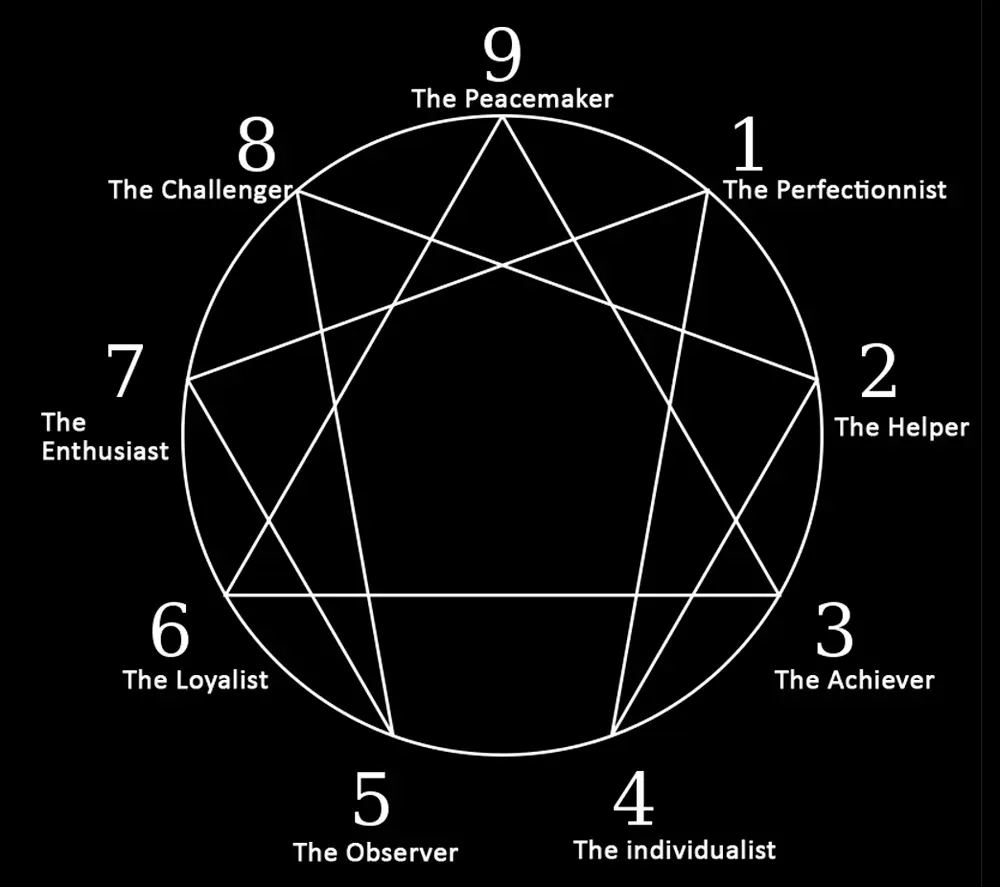
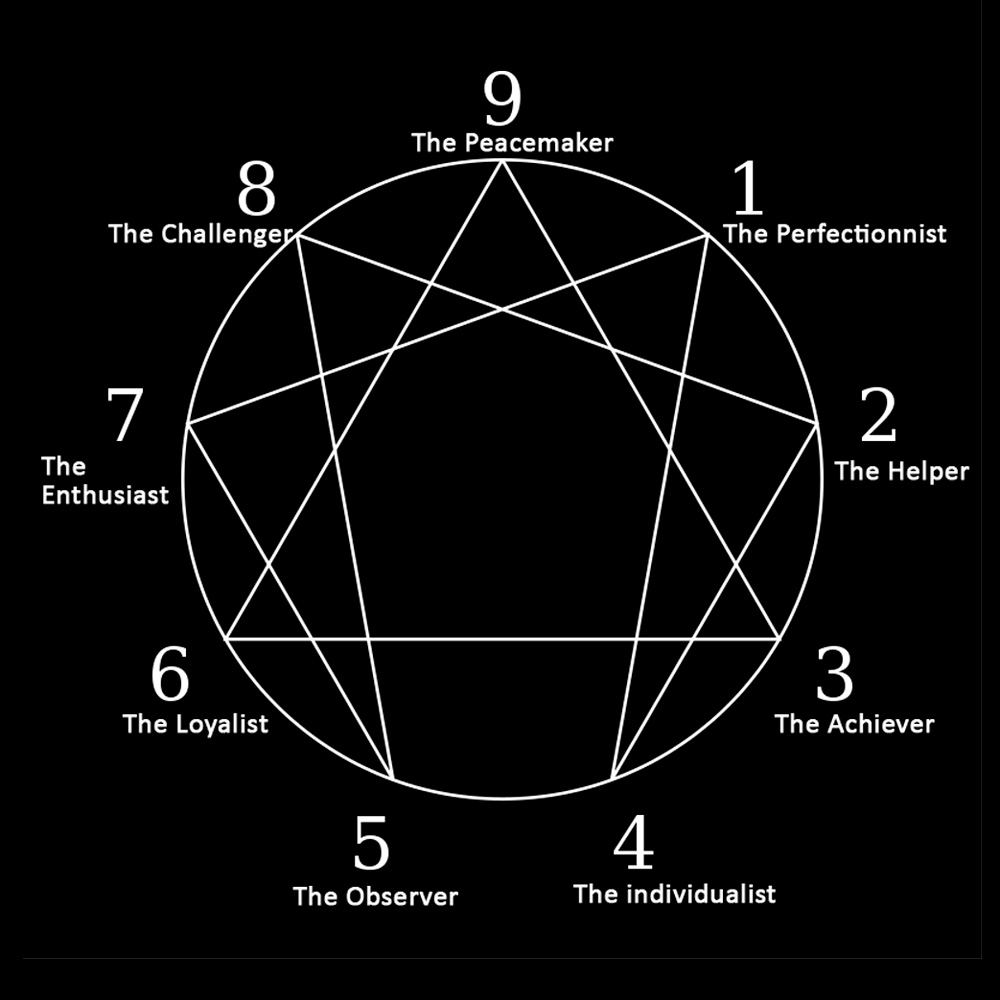
The Enneagram describes nine personality types, each with its distinct motivations, fears, desires, and behaviors. Here's an overview of the nine types:
- The Perfectionist (Type 1): Strives to do what is right and correct, motivated by the need for perfection and the fear of imperfection.
- The Helper (Type 2): Desires to be loved and appreciated, motivated by the need to help others and the fear of being unneeded.
- The Achiever (Type 3): Seeks success and recognition, motivated by the need for accomplishment and the fear of failure.
- The Individualist (Type 4): Focuses on authenticity and self-expression, motivated by the fear of lacking identity or personal significance.
- The Investigator (Type 5): Seeks knowledge and understanding, motivated by the fear of incompetence or inner emptiness.
- The Loyalist (Type 6): Desires security and stability, motivated by the fear of danger or insecurity.
- The Enthusiast (Type 7): Seeks pleasure and avoids pain, motivated by the fear of deprivation or emotional pain.
- The Challenger (Type 8): Seeks to control their environment, motivated by the fear of weakness or vulnerability.
- The Peacemaker (Type 9): Desires inner and outer peace, motivated by the fear of conflict and separation.
In-Depth Look at the Enneatypes
Type 1: The Perfectionist
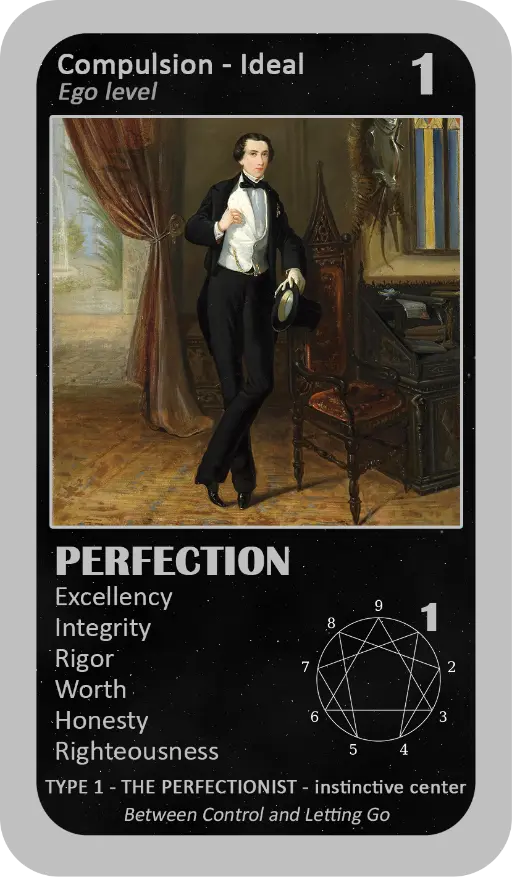
Perfectionists often have a strong sense of morality and justice. They set high standards for themselves and are driven by a strong sense of duty. However, their relentless pursuit of perfection can lead them to be overly critical, both of themselves and others. Their path of development involves learning to embrace acceptance and understanding that perfection is not always necessary to be valued.
Type 2: The Helper
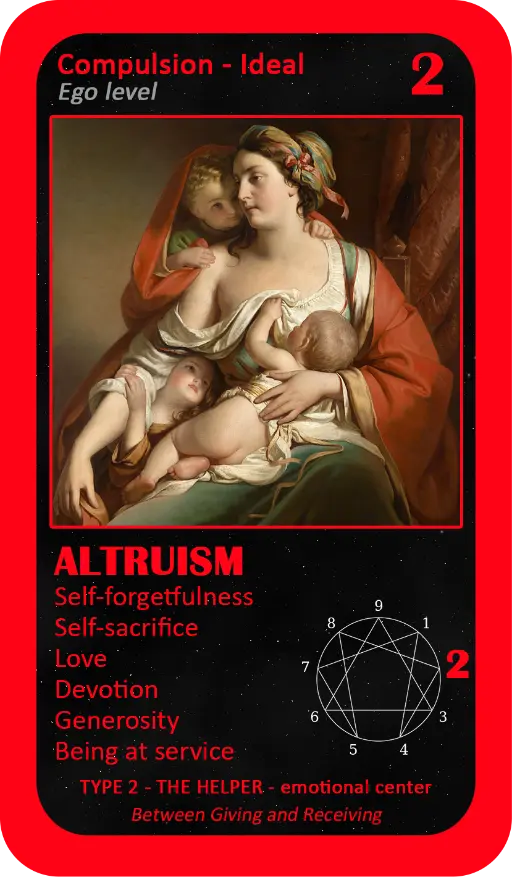
Helpers are natural caregivers, always ready to offer love and support to others. However, this generosity can sometimes mask an underlying desire to be needed or loved. They must learn to set boundaries and recognize their intrinsic value, independent of the services they provide.
Type 3: The Achiever
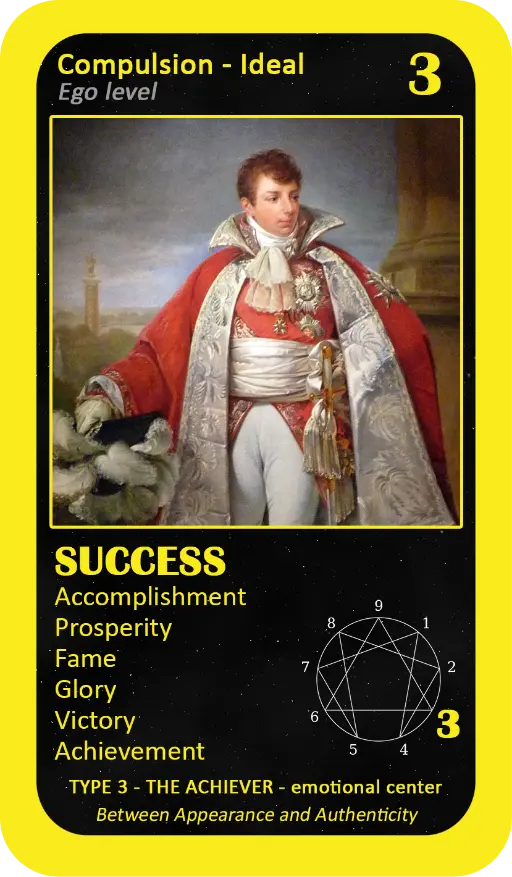
Achievers are dynamic and ambitious individuals who strive to excel in all aspects of their lives. Their success is often measured by external accomplishments, which can lead to an over-identification with their public image. They need to work on finding a balance between their need for achievement and a genuine connection with their inner self.
Type 4: The Individualist
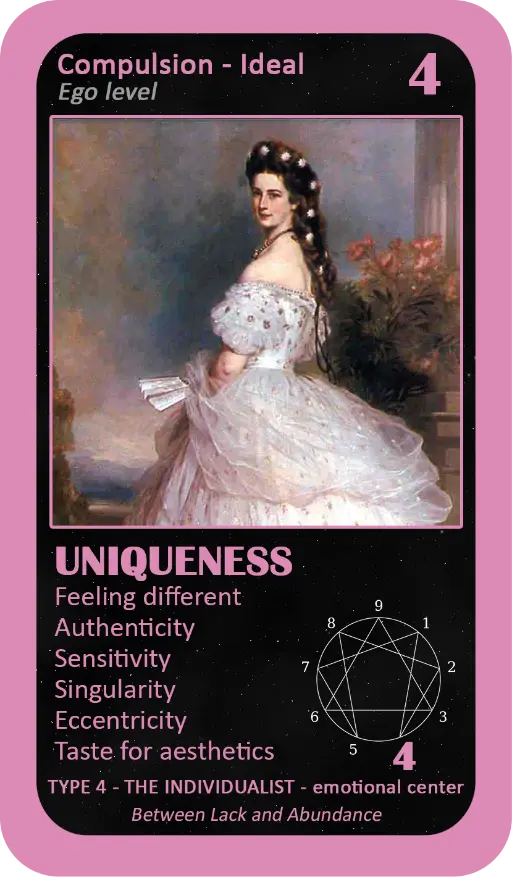
Individualists are often creative and deeply in touch with their emotions. They aspire to authenticity and personal expression but can be prone to envy and melancholy. Their challenge is to learn to appreciate the beauty of their uniqueness without constantly comparing themselves to others.
Type 5: The Observer
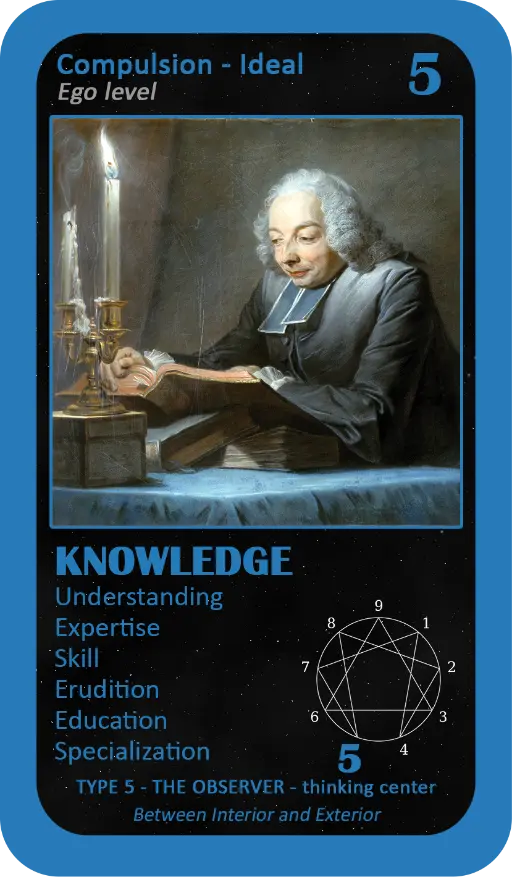
Observerss are analytical thinkers who value knowledge and autonomy. They may sometimes retreat into their intellectual world, avoiding emotional interaction. To grow, they need to balance their need for solitude with engagement in meaningful relationships.
Type 6: The Loyalist
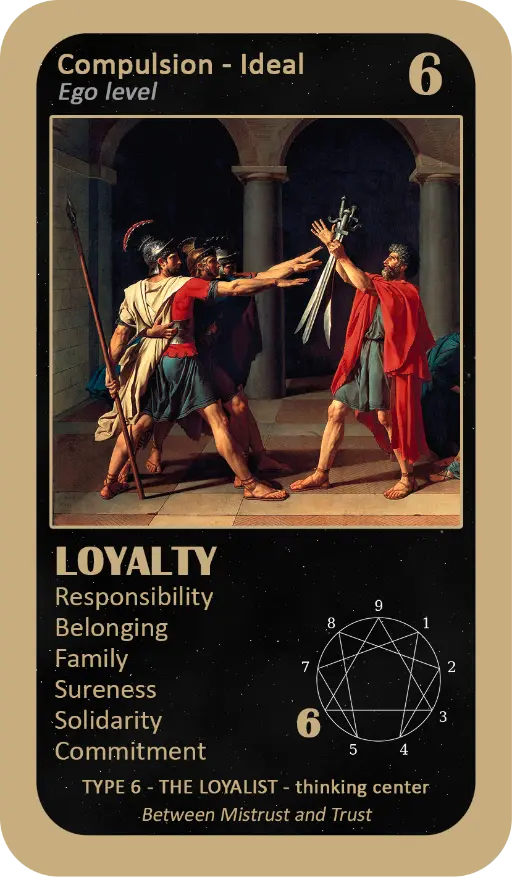
Loyalists are reliable and responsible people, often preoccupied with safety. They can oscillate between excessive loyalty and mistrust, constantly seeking certainty. Their personal growth lies in developing self-confidence and the ability to embrace uncertainty.
Type 7: The Enthusiast
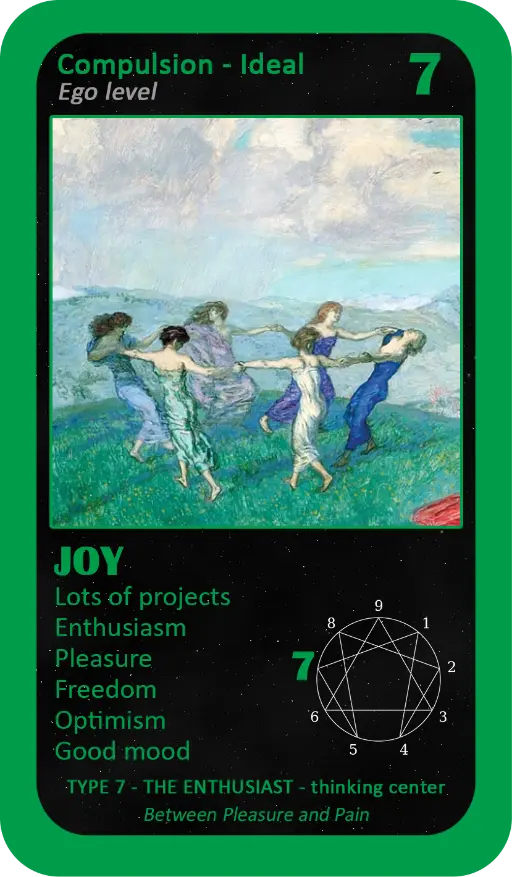
Enthusiasts are optimistic and energetic, always seeking new experiences and pleasure. Their fear of pain or deprivation can lead them to avoid commitments or difficult emotions. They need to learn to appreciate the present moment and embrace emotional depth.
Type 8: The Challenger
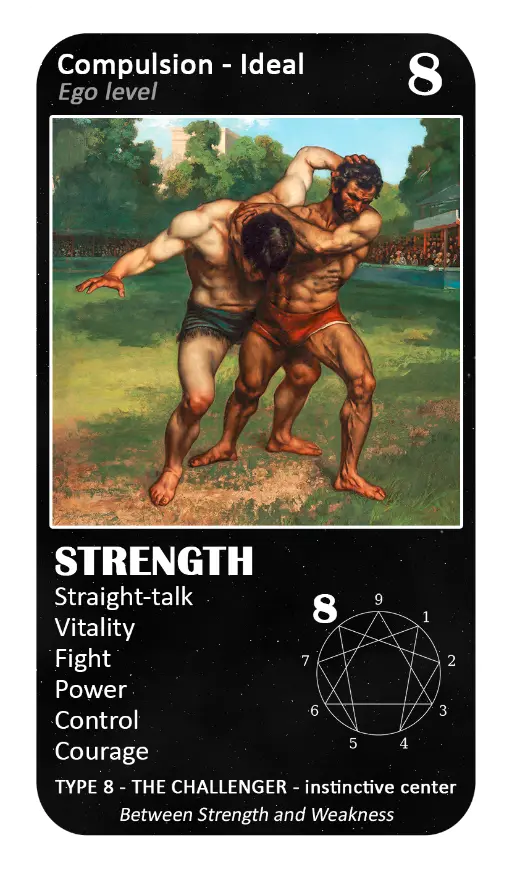
Challengers are strong and assertive individuals who seek to protect themselves and others. Their need for control can make them dominant or intimidating. Their development involves recognizing their vulnerability and the ability to trust others.
Type 9: The Peacemaker
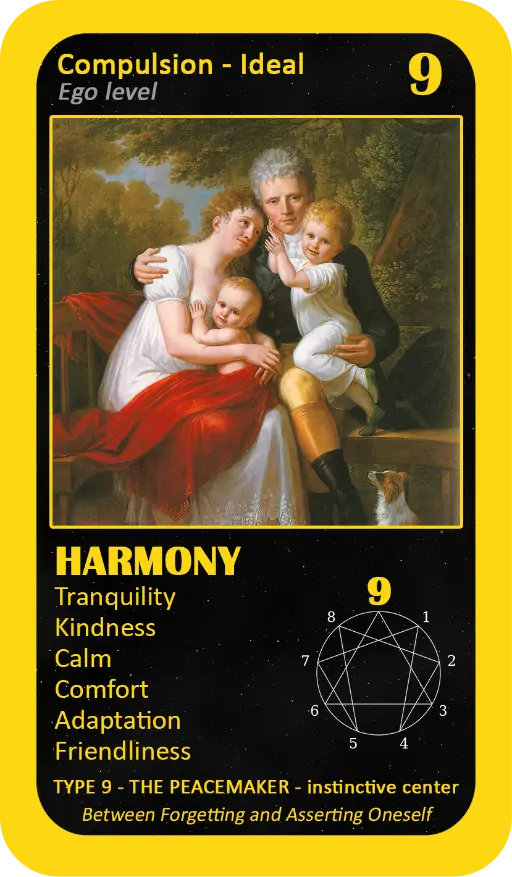
Peacemakers are natural mediators who seek to maintain harmony. Their desire for peace can lead them to avoid conflict or suppress their own needs. They need to learn to assert their desires while respecting those of others.
The Enneagram Oracle
Did you like the cards above? They are part of the Enneagram Oracle.
Would you like to know more about this Oracle? All the info is there!
How to Use the Enneagram for Personal Development

Recognize Your Automatic Patterns
Each Enneagram type has automatic thought, emotion, and behavior patterns. By becoming aware of these patterns, you can begin to challenge and transform them.
Cultivate Strengths and Work on Weaknesses
The Enneagram is not just about categorization; it also offers a path for growth. Identify your natural strengths and work on cultivating aspects of yourself that may be underdeveloped or misused.
Improve Your Relationships
Understanding others' Enneagram types can help you communicate better and resolve conflicts. You can learn to see others' motivations and fears in a new light, reducing misunderstandings and strengthening connections.
Integrate the Enneagram into Daily Life
The Enneagram can be integrated into various aspects of your life, whether in your career, personal life, or spiritual journey. It is not a static tool but a dynamic model that can evolve with you.
The Enneagram and Spirituality
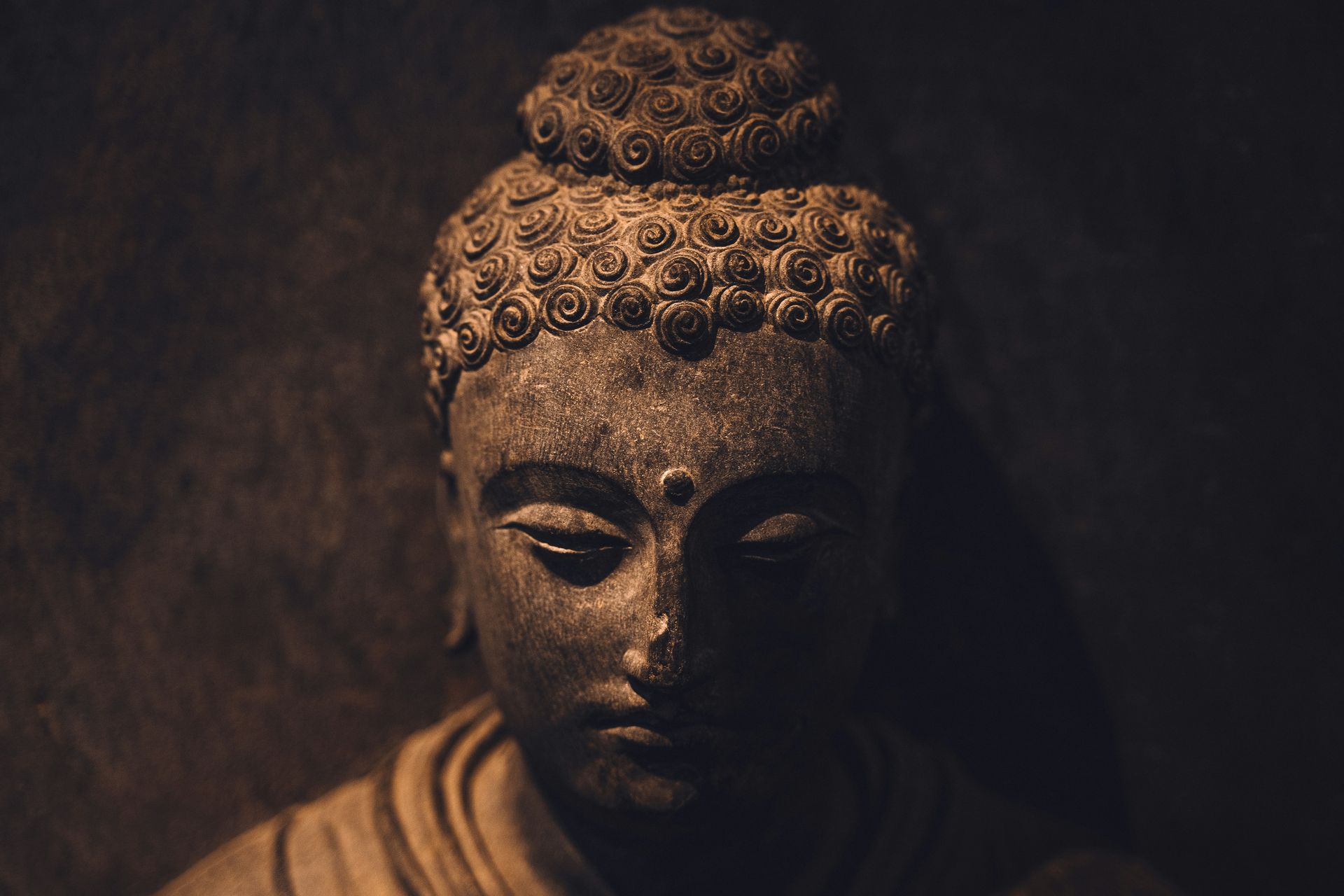
A Tool for Deep Self-Knowledge
For those looking to go beyond personal development and explore deeper aspects of their being, the Enneagram can serve as a guide. By identifying not only behaviors but also underlying spiritual motivations, it is possible to embark on a journey toward increased awareness and inner peace.
Path to Awakening
Some practitioners see the Enneagram as a path to spiritual awakening. By overcoming the illusions and attachments associated with each type, one can move closer to a higher state of consciousness and a sense of unity with the world.
The Enneagram in the Professional World

Enhancing Leadership
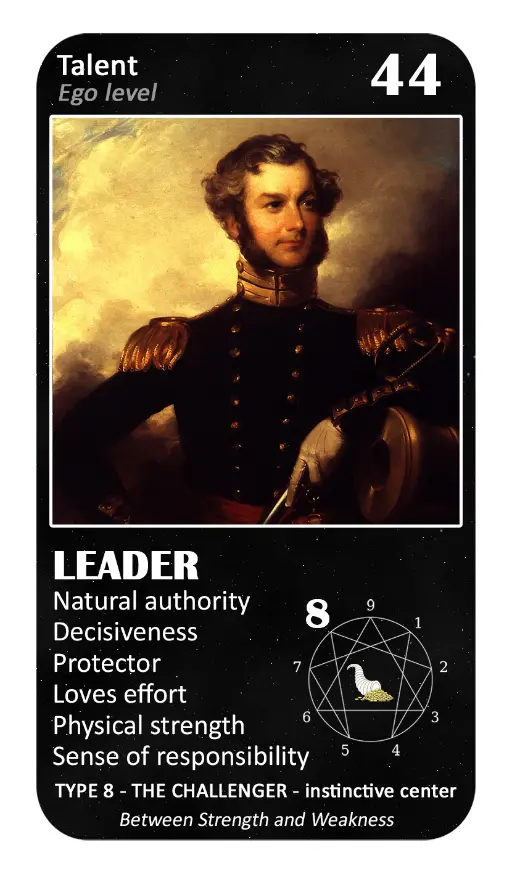
Understanding your Enneagram type and that of others can be a valuable asset for a leader. It can help identify natural leadership styles, anticipate challenges, and maximize team effectiveness.
Team Dynamics
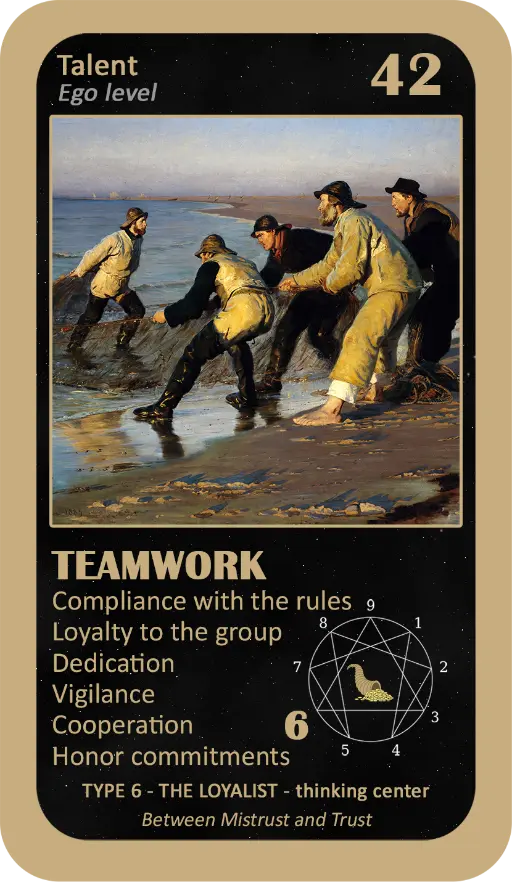
Teams greatly benefit from the diversity of personality types. By recognizing each type's strengths and needs, it is possible to create a more harmonious and productive work environment.
Managing Stress and Conflict
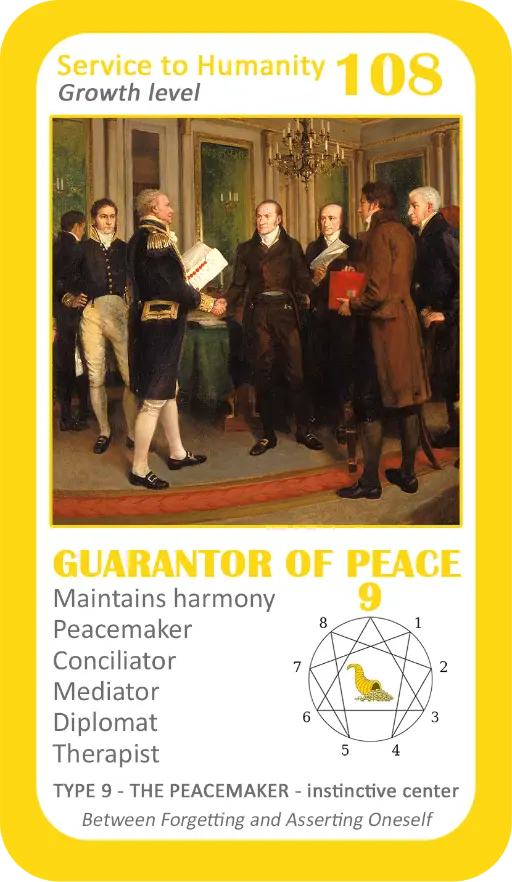
The Enneagram can also be used to manage stress and conflict at work. By understanding the specific stress triggers for each type, individuals and teams can develop strategies to maintain a healthy work environment.
The Wealth Enneagram Oracle
Did you like the cards above? They are part of The Wealth Enneagram Oracle.
Would you like to know more about this Oracle? All the info is there!
Education and Parenting with the Enneagram

Tailoring Education to Personality Types
Understanding the Enneagram allows parents and educators to recognize that each child is unique, with specific emotional needs and learning styles. For example, a Type 2 child, the Helper, may be highly attuned to others' needs and seek to be useful. This type of child may need to learn to balance their desire to help with their own needs. Conversely, a Type 5 child, the Observer, might prefer moments of solitude to reflect and assimilate information, requiring a different approach to engage them in social or collaborative activities.
Encouraging Emotional Development
The Enneagram also provides tools to support children's emotional development. By understanding the core fears and desires of each type, parents can better guide their children toward emotional maturity. For example, a Type 6 child, the Loyalist, might need a stable and reassuring environment to feel secure, while a Type 7 child, the Enthusiast, might benefit from a framework that values discipline and the ability to handle boredom.
Promoting Respectful Communication
The Enneagram helps establish more respectful and empathetic communication between parents and children. By recognizing their child's deep motivations, parents can respond more effectively and kindly to challenging behaviors. This fosters a relationship based on mutual understanding and respect, reducing family tensions and conflicts.
Diversity and Inclusion through the Enneagram

Understanding and Appreciating Differences
The Enneagram is not limited to individual understanding; it also encourages appreciation of differences within groups. Each personality type brings a unique perspective, and recognizing this diversity can enrich interactions in all aspects of life, whether at work, in the family, or in the community.
Promoting Inclusion
By understanding the motivations and needs of each type, it becomes possible to create more inclusive environments where everyone feels valued and respected. For example, in a professional context, knowing that a Type 9 colleague, the Peacemaker, prefers to avoid conflicts can encourage more gentle and conciliatory communication methods.
The Enneagram as a Tool for Emotional Well-Being

Managing Stress with the Enneagram
The Enneagram is a valuable tool for managing stress. Each personality type reacts to stress in a specific way, and understanding these reactions can help develop tailored strategies. For example, a Type 1, the Perfectionist, might be more likely to experience stress in the face of high standards. Being aware of this tendency can help them develop self-compassion and learn to let go of certain expectations.
Developing Emotional Resilience
The Enneagram also encourages the development of emotional resilience by helping to identify and address the root causes of negative emotions. By understanding their own type and associated fears, individuals can learn to manage their emotions more effectively and build healthier coping mechanisms.
Cultivating Inner Balance
The Enneagram offers a path to inner balance by encouraging self-awareness and self-acceptance. By recognizing and accepting their own tendencies, individuals can learn to live in harmony with themselves and their environment.
Conclusion
The Enneagram is a powerful tool for understanding human personality in all its complexity. Whether you're looking to better understand yourself, improve your relationships, or foster personal growth, the Enneagram offers a unique path toward self-awareness and emotional well-being. By exploring the nine personality types, you can gain valuable insight into your motivations, fears, and desires and learn to live in harmony with yourself and the world around you. Whether you're a newcomer to the Enneagram or already familiar with its principles, this model can accompany you on your journey of personal and spiritual development.
-----
This article was written using artificial intelligence and has been verified, checked and edited by Elena. Did it help you better understand the Enneagram? Please share your thoughts or ask questions in the comments. If you would like to learn more about the Enneagram, check out Elena’s self-published Enneagram Oracles, or download Elena’s free e-book “Introduction to the Enneagram.”









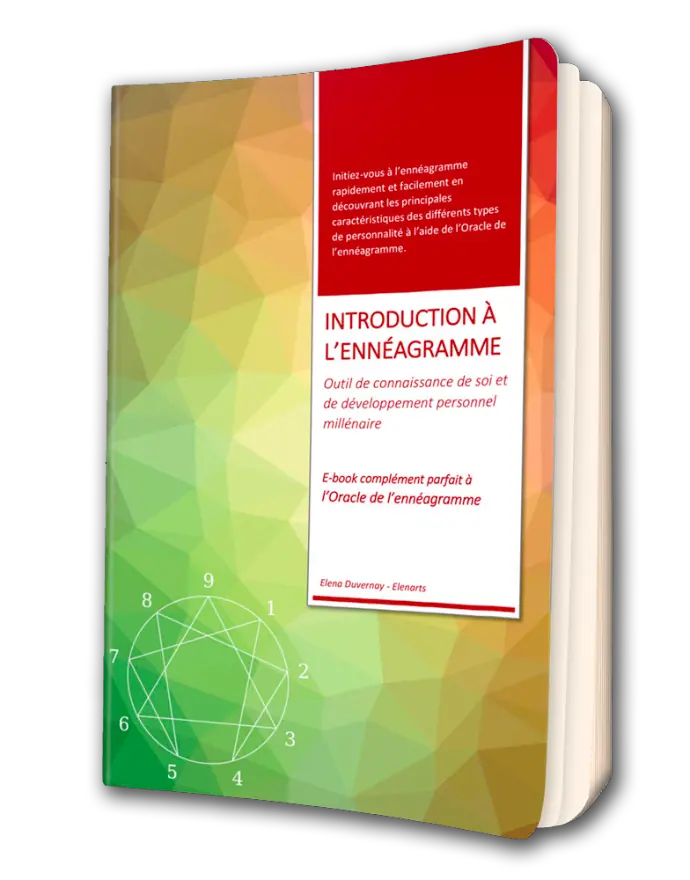
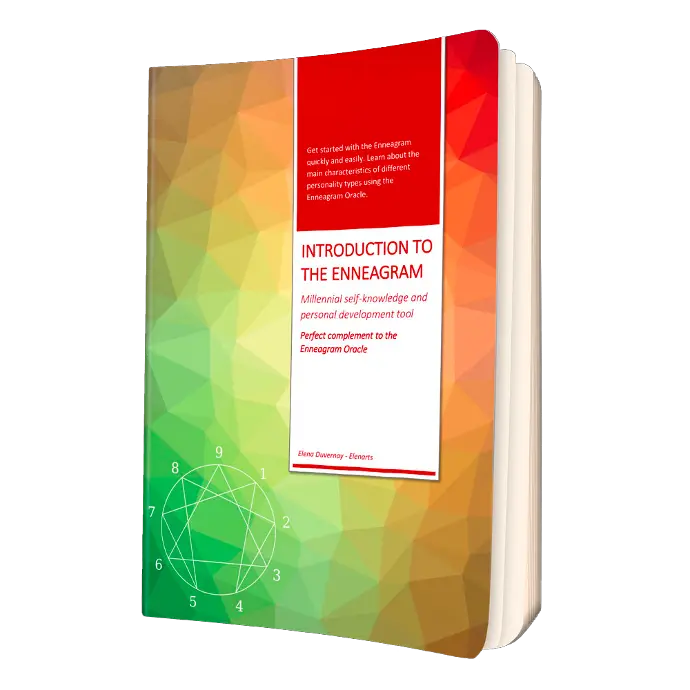

The Enneagram: A Comprehensive Guide to Understanding and Exploring Your Personality